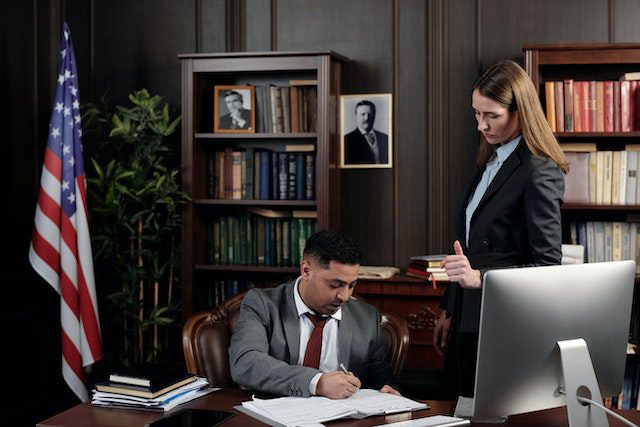Personal injury claims arise when individuals suffer harm due to the negligence or wrongful actions of others. Establishing negligence is a fundamental aspect of these claims, as it determines whether the responsible party should be held legally accountable for the injuries and damages sustained by the victim. In this comprehensive article, we delve into the process of establishing negligence in personal injury claims. From understanding the elements of negligence to exploring the role of evidence, we provide insights into how victims, with the assistance of legal professionals, can seek compensation for their losses.
Understanding Negligence in Personal Injury Claims
What is Negligence?
Negligence refers to the failure of an individual or entity to exercise reasonable care, resulting in harm or injury to another person. In the context of personal injury claims, establishing negligence involves demonstrating that the responsible party breached their duty of care, which directly led to the victim’s injuries and damages.
Elements of Negligence
To successfully establish negligence, the following elements must be proven:
1. Duty of Care: The responsible party had a legal obligation to exercise reasonable care to prevent harm to others. This duty of care is often based on the relationship between the parties and the circumstances of the situation.
2. Breach of Duty: It must be demonstrated that the responsible party breached their duty of care by failing to meet the standard of reasonable care expected in the given situation. This breach can result from actions taken or omitted.
3. Causation: There must be a direct link between the breach of duty and the injuries suffered by the victim. The breach of duty must be the proximate cause of the harm, meaning that it directly led to the injuries without any unforeseeable intervening events.
4. Damages: The victim must have suffered actual damages, such as physical injuries, medical expenses, loss of income, pain and suffering, and other losses. Without measurable damages, a negligence claim may not be viable.
Role of Evidence in Establishing Negligence
Gathering Relevant Evidence
Evidence plays a crucial role in substantiating a claim of negligence. Victims and their legal representatives work together to gather evidence that supports the four elements of negligence. This evidence can include accident reports, medical records, eyewitness statements, photographs of the accident scene, expert opinions, and more.
Eyewitness Testimonies
Eyewitness testimonies provide:
- Firsthand accounts of the incident.
- Helping to establish the sequence of events.
- The actions of the parties involved.
- Any unsafe conditions that contributed to the accident.
Eyewitnesses can provide crucial information regarding the responsible party’s actions and whether they adhered to their duty of care.
Proving Duty of Care and Breach
Duty of Care
In personal injury claims, the duty of care owed by the responsible party is determined by the circumstances of the situation. For example, drivers owe a duty of care to operate their vehicles safely and follow traffic laws. Property owners owe a duty of care to maintain their premises in a safe condition for visitors. Establishing duty of care involves demonstrating that the responsible party had a legal obligation to prevent harm to the victim.
Breach of Duty
Proving a breach of duty involves showing that the responsible party failed to meet the standard of reasonable care expected in the given situation. This can be challenging, as it requires comparing the responsible party’s actions to what a reasonable person would have done under similar circumstances. Evidence such as surveillance footage, expert opinions, and industry standards may be used to establish that the responsible party’s actions fell short of the expected standard of care.
Causation and Damages
Establishing Causation
Causation is a critical element in proving negligence, as it connects the breach of duty to the victim’s injuries. There are two types of causation: actual cause (but for causation) and proximate cause (foreseeability). Actual cause involves demonstrating that the injuries would not have occurred “but for” the responsible party’s breach of duty. Proximate cause involves showing that the injuries were a reasonably foreseeable result of the breach of duty without any intervening events that break the causal chain.
Quantifying Damages
Damages are the measurable losses suffered by the victim as a result of the injuries caused by the negligence. These can include economic damages (medical expenses, loss of income, property damage) and non-economic damages (pain and suffering, emotional distress, loss of enjoyment of life). Victims must provide evidence of their damages, such as medical bills, invoices, and expert opinions, to establish the extent of their losses.
Legal Representation and the Role of a Personal Injury Lawyer
Importance of Legal Representation
Navigating the complexities of personal injury claims and proving negligence can be overwhelming for victims, especially while dealing with the physical and emotional aftermath of an accident. Hiring a skilled personal injury lawyer provides victims with knowledgeable guidance and effective advocacy throughout the legal process.
Gathering and Presenting Evidence
Personal injury lawyers have experience in gathering and presenting evidence to establish negligence. They work closely with their clients to compile relevant documentation, interview witnesses, and consult experts to strengthen the case. Lawyers know how to strategically present evidence that supports each element of negligence, increasing the likelihood of a favorable outcome.
Negotiations and Litigation
Negotiating Settlements
Before taking a case to court, personal injury lawyers often engage in negotiations with the responsible party’s insurance company or legal representation. They present a compelling case backed by evidence to demonstrate negligence and the extent of damages. Lawyers negotiate for fair compensation that covers medical expenses, lost income, pain and suffering, and other losses.
Courtroom Advocacy
If negotiations do not result in a satisfactory settlement, a personal injury lawyer will advocate for their client’s rights in court. Lawyers present evidence, cross-examine witnesses, and make legal arguments to establish negligence and demonstrate the impact of the injuries on the victim’s life. Their goal is to secure a favorable verdict that provides the victim with the compensation they deserve.
Conclusion
Establishing negligence is a critical step in pursuing compensation for injuries and damages in personal injury claims. Victims, with the support of legal professionals like the Tallahassee Personal Injury Lawyer, work to prove that the responsible party breached their duty of care, leading to injuries and measurable damages. Through the careful gathering and presentation of evidence, victims can seek justice and hold negligent parties accountable, ensuring that they receive the compensation needed to rebuild their lives and move forward after an accident.
Featured Photo by August de Richelieu: https://www.pexels.com/
 With a BA in communications and paralegal experience, Irma C. Dengler decided to make the best of her writing skills. She decided to turn complicated legal matters into something more palatable for the masses. Therefore, Irma became a law communicator who writes about everyday problems so everyone can understand them and take the appropriate action. She specializes in personal injury cases, as they are more common than anyone thinks, but her areas of expertise also include civil law, criminal law, insurance-related issues, and more.
With a BA in communications and paralegal experience, Irma C. Dengler decided to make the best of her writing skills. She decided to turn complicated legal matters into something more palatable for the masses. Therefore, Irma became a law communicator who writes about everyday problems so everyone can understand them and take the appropriate action. She specializes in personal injury cases, as they are more common than anyone thinks, but her areas of expertise also include civil law, criminal law, insurance-related issues, and more.














